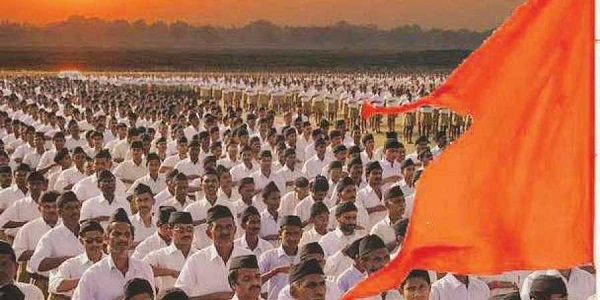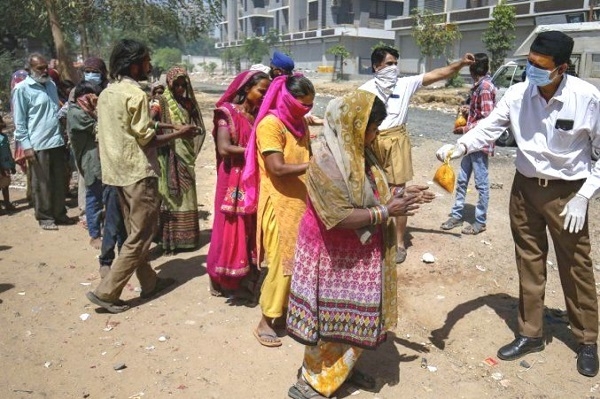Human is a Resource
Total Views |
I am associated with Rashtriya Swayamsevak Sangh, RSS for last more than 50 years. The translation of word Swayamsevak is volunteer. But in RSS it is meant much beyond being just a volunteer, Volunteers are supposed to be humans. In Management Science, the principle is Human is a resource. There is a branch of Management Science called as Human Resource Management. This stream of knowledge believes that human is a resource and it is related to the people employed with any organization. It deals with sourcing, compensation, training, retention, development and discharging employed people or managing these activities.
Commercial , non-commercial organizations have people working in different positions, in different capacities and having different skill sets. These organizations also have other tangible or non-tangible resources like plant and machinery, equipment, buildings, patents, brand name, etc., at its disposal. We can call them as non-Human resources. At times, such non-Human resources are perceived as more important than people working in that organization. Many Managers across hierarchy feel or have an opinion that, they can hire and fire people at their will. People will have to work for an organization if they are paid. It is also believed by many managers that money is the only motivation for people to work more or work hard.

However, in the 21st Century, there is a significant shift in valuing Human as a resource. There is a shift in paradigm. Accordingly, in all the Industrial, Commercial, Social organizations who have employed people are having Human Resource Department or HRD. They vouch that, they treat their staff as resource and value them. In the previous century it was Personnel Department.
Many organizations work in letter and spirit for this concept. Many are working hard bring shift in paradigm. Managers across hierarchy are making efforts to use the Human resource to the best of their abilities.
Human is the only asset (resource) which appreciates over the years while rest all other assets (resources) depreciate over a period. The depreciation of the non-human assets is to be booked in the balance sheet according to the prevailing law of the country.
Why this discourse here when we started with RSS in the first paragraph? My experience of working in RSS, a cultural-social -voluntary organization tells me how a human is valued in RSS or Sangh as it is called many a times. I have worked in different manufacturing companies in Mumbai and Pune for 32 years. For the last five years, I have interacted as a Consultant with people across hierarchy of more than 80 organizations.
In Sangh, Swayamsevak means not only a volunteer but a person who is ready to work selflessly in any situation and at any given time. The least a Swayamsevak does is to attend a daily Shakha or a weekly meeting and/or to attend different programs on regular basis. There are thousands of Swayamsevaks who follow only this routine for years. They do not move beyond this. Yet, their contribution is valued and affection for them is no less than for a senior office bearer! Because Sangh believes in the principle ‘ Human is a resource’. A Swayamsevak who only attends a one-hour Shakha for years despite all odds is valued because he is seen as someone who holds the fort across India. He inspires people across generations to participate by being there physically eveyday. He gives assurance to the society that RSS Shakha is running every day at that place means things will be taken care of when required! I am a Karyakarta of Sangh for about 43 years.

Karyakarta means a Swayamsevak who is bestowed on some responsibility by his seniors in the area he is working. It is the responsibility and not the coveted position in the organization! This is something unique! Swayamsevak accepts the responsibility without hesitation. Every year, the team of Karyakartas or officials responsible to take care of activities of Sangh of an area assess potential, abilities, availability of Swayamsevaks and Karyakartas in that geographical area, the needs of different departments or functions ,the hierarchical requirements, etc. This is called as collective wisdom of Sangh. The span of area would increase as you grow as a Swayamsevak first and then as a Karyakarta. A Swayamsevak is given responsibility to work in a department in a defined area by the respective team. This responsibility to work is bestowed not because he is capable but with the expectation to become capable after assessing his potential. Swayamsevak works hard to prove that the expectations were genuine! This is how a Swayamsevak grows in Sangh as a Karyakarta. The resourcefulness comes with the time devoted by him, the skills learnt and exhibited by him, the efforts taken to upgrade, the ability to work within a team and/or as leader of a team.
There are many Swayamsevaks and Karyakartas who become inactive for some time or for many years. However, the local teams keep live contact with them. Nobody is abused or offended or ignored for being inactive. The efforts are put for those inactive Swayamsevaks and Karyakartas to become active again. One has umpteen examples wherein Karyakartas who were not active for couple of decades are back in action with the same zeal and are putting best efforts in the given department of work. If such a Karyakarta is placed higher in the hierarchy, nobody at the lower rank questions about their absence for so long. This is a true value of a resource! The importance is given to present situation and not on the past!
It so happens that, a Karyakarta works in a department or function for years and desires a change and discusses about it with his seniors. The seniors also think over it and make the desired change. Therefore, you will find that a medical practitioner oversees organizational activities, or a Corporate Head is given charge of function of Service to Society or physical training. The job rotation helps the organization to utilize the resource to best of its potential. It is experienced that many Karyakartas perform in a function better than the function or department for which they were known well! The trust or faith shown by the team of seniors motivates him to work better. Also, the newness of the work brings freshness in him and it rejuvenates him as a Karyakarta.
There are Swayamsevaks who at the age of 85 or 90 attend Shakha and contribute to the organization to the best of their capacities. One has come across many such persons who were enrolled in Sangh about 70-75 years ago at the age of 8 or 10. They became Karyakartas at about age of 20. This means they are working for Sangh as an adult for last more than 60 years. Imagine the utilization of the resource! In Pune city alone the count could be around 400 to 500!
There is a poem in Hindi which starts with Manushya too badaa mahaan hain ! It means hey human you are great! This belief underlines the principle -Human is a resource! RSS truly believes it!

